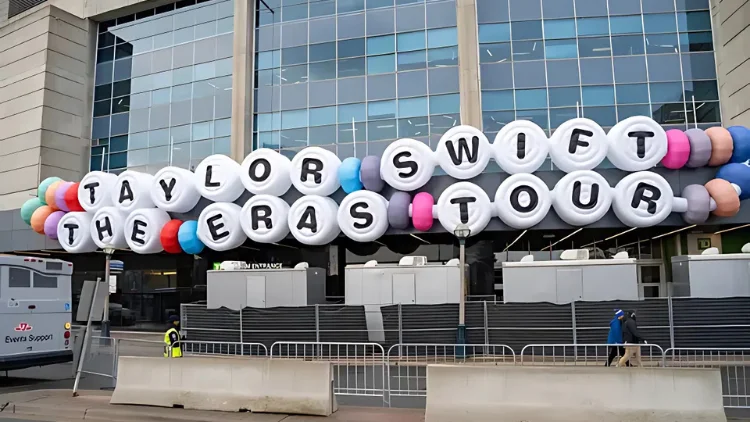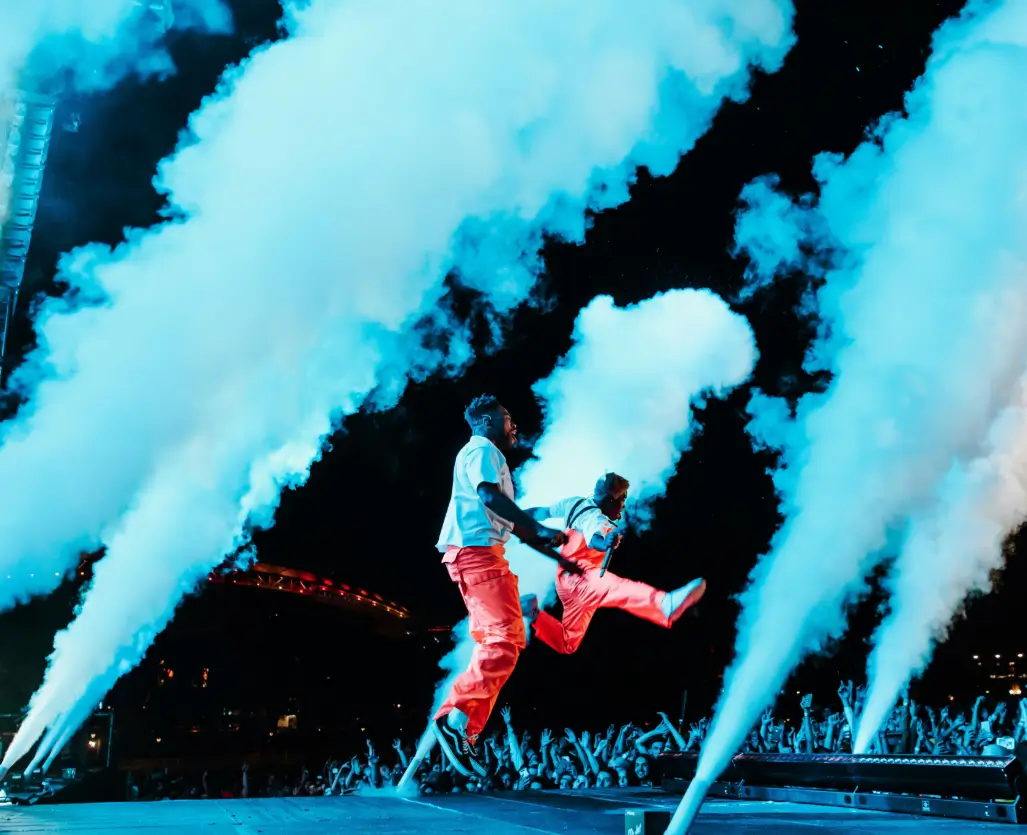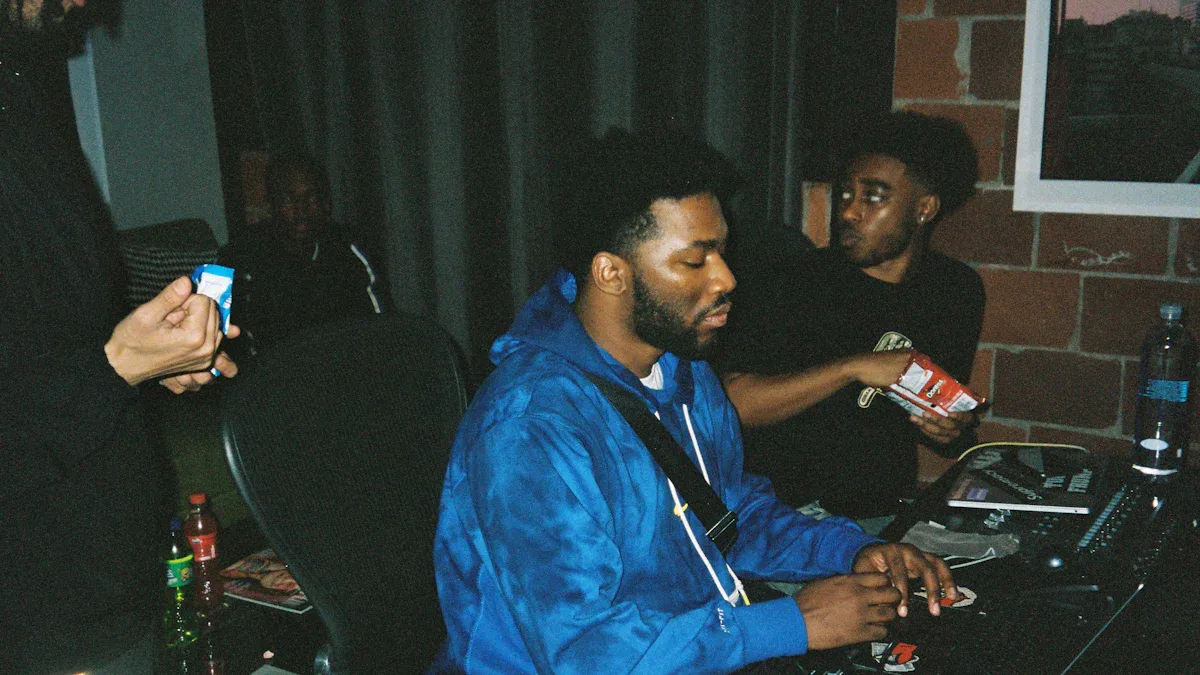From Jay Chou’s iconic “Blue and White Porcelain” in China to Taylor Swift’s chart-topping “Shake It Off” in the U.S., from BTS’s global sensation “Dynamite” in South Korea to Utada Hikaru’s timeless “First Love” in Japan, music transcends borders with its unique melodies and profound emotions. Every genre weaves its own story, sparks feelings, and connects with listeners across cultures. But which genres are shaping the soundscape of today’s global music industry?
What is the Most Popular Music Genre?
1. K-pop
K-pop has evolved from a regional phenomenon into a global powerhouse. Groups like BTS, TWICE, and BLACKPINK have captivated audiences with their high-energy performances, meticulously crafted music, and visually stunning videos. What truly sets K-pop apart is its interactive fan culture, fueled by social media platforms like X and Instagram. Fandoms, such as BTS’s ARMY, tirelessly promote their idols, making K-pop a genre that transcends language and cultural barriers.

2. Hip-Hop/Rap
Once a niche genre, hip-hop and rap now dominate global music charts. With its rhythmic beats, storytelling prowess, and cultural relevance, it has become one of the most influential genres of the century. Beyond music, hip-hop’s impact extends to fashion, art, and social activism. Its adaptability to regional styles, such as UK grime and Latin trap, along with accessibility via platforms like Spotify, has solidified its status as a cultural cornerstone.
3. Pop
Pop music remains a universal favorite, thriving by integrating elements from other genres like EDM, rock, and hip-hop. Known for its catchy melodies and polished production, pop’s appeal spans generations. Artists like Taylor Swift, Ariana Grande, and The Weeknd continuously redefine the genre, dominating playlists and charts worldwide.

4. Country
Country music has undergone a significant transformation, moving beyond its traditional roots to attract a broader audience. While it remains deeply tied to themes like love, family, and small-town life, modern country often incorporates elements of pop and rock, creating a crossover appeal. Artists like Morgan Wallen and Carrie Underwood have helped broaden its appeal, especially in the United States, where country music continues to thrive.
5. Rock Music
Though its mainstream dominance has declined, rock music retains a devoted fanbase. Classic bands like The Rolling Stones and modern acts like Imagine Dragons continue to attract audiences, particularly at live events. Rock’s raw energy and emotional depth ensure its lasting influence.
6. Jazz
Jazz stands out for its improvisation and complexity. While it’s less mainstream today, it remains a cherished genre among enthusiasts. Jazz festivals and artists like Kamasi Washington keep the tradition alive while introducing it to modern audiences.
7. Classical
Classical music holds an enduring place in the world of art and culture. From the symphonies of Beethoven to modern cinematic scores by composers like Hans Zimmer, the genre continues to showcase the timeless beauty of orchestral music. Classical music’s role in education, cultural events, and relaxation has kept it relevant, appealing to both traditionalists and younger listeners seeking musical depth.
8. Electronic Dance Music (EDM)
EDM, with its pulsating beats and electrifying energy, has cemented itself as a go-to genre for partygoers and festival fans alike. Global events like Tomorrowland and Ultra Music Festival highlight EDM’s unparalleled ability to bring people together through music. World-renowned DJs such as David Guetta, Calvin Harris, and Martin Garrix have taken the genre from underground clubs to the heart of mainstream culture, making it a universal favorite.
9. Latin Music
Latin music has gained worldwide attention, thanks to genres like reggaeton, salsa, and bachata. Artists like Bad Bunny, J Balvin and Rosalia have propelled Latin rhythms onto global charts, making it a staple in playlists worldwide.
10. R&B/Soul
R&B remains a cornerstone of emotional storytelling, with its soulful vocals and smooth instrumentals captivating listeners worldwide. Modern R&B blends traditional elements with contemporary production, resulting in hits from artists like SZA, H.E.R., and Khalid. Its ability to connect with both mainstream audiences and niche fans ensures its enduring influence.
Why These Genres Are Dominating?
The success of a music genre lies in its ability to evolve and resonate with the times. Genres like hip-hop,pop, and EDM thrive on their adaptability, while classical,rock, and jazz maintain their niche appeal through loyal audiences and live performances. This dynamic ensures a vibrant and diverse musical landscape.

Genre Popularity by Region
The popularity of music in different regions often varies due to cultural, historical, and social backgrounds. Here are the preferences of major regions in terms of music types and the reasons behind them:
Music preferences vary across regions due to cultural, historical, and social influences. Below are the key trends in major regions and the reasons behind them:
Asia
China: C-Pop and traditional music are hugely popular, with artists like Jay Chou (“Sunny Day”), Jolin Tsai (“Dancing Diva”), and recent national-style hits like “Red Ling” gaining significant traction. The rise of hip-hop culture, fueled by shows like The Rap of China, has popularized C-Rap.
South Korea: K-pop has become a global cultural powerhouse, with groups like BTS and BLACKPINK leading the way. Traditional Korean folk songs, such as Arirang, maintain a loyal audience, even outside of Korea.
Japan: J-pop (such as classics by Utada Hikaru and Namie Amuro) and anime music (including Neon Genesis Evangelion’s theme song and Cruel Angel’s Thesis) dominate Japan’s music market. Additionally, rock and Visual Kei have dedicated fan bases.
North America
United States: Hip-hop/rap and pop music are dominant in the U.S., with global superstars like Drake, Taylor Swift, and Beyoncé leading the charts. Country music, popular in the southern states, features stars such as Carrie Underwood and Morgan Wallen.
Canada: Pop and indie music dominate in Canada, with international superstars like Justin Bieber and The Weeknd shaping global pop music trends.
Europe
United Kingdom: The UK is one of the birthplaces of rock, with iconic bands like The Beatles and Coldplay still enjoying worldwide acclaim. Electronic music and indie pop are also popular, with a strong local scene.
France: France has made a lasting impact on electronic music, with Daft Punk being global icons. French chanson (e.g., Edith Piaf’s LaVie en Rose) also holds a special place in the hearts of locals.
Latin America
Latin music, known for its infectious rhythms, is a dominant global force. Hits like Despacito by Luis Fonsi and Bad Bunny have taken the world by storm. Samba, salsa, and bachata remain beloved genres throughout the region.
Africa
African music is deeply rooted in traditional rhythms and ethnic influences. Afrobeats (e.g., Burna Boy and Wizkid) has rapidly gained popularity worldwide, while African drums and folk dances continue to play an important role in local culture.
FAQ
Is 70s Music Copyrighted?
Yes, most 70s music is still copyrighted. For works created after January 1, 1978, copyright lasts for the creator’s life plus 70 years. For example, Hotel California by The Eagles, released in 1976, remains copyrighted until at least 2071 due to copyright renewal. Always respect copyright laws when using these tracks outside of personal enjoyment.
Check the royalty free music for podcasts.
What is the Most Popular Genre of Music in America?
As of recent reports and music charts, hip-hop and rap are the dominant genres in the United States. These genres are culturally influential, with artists like Drake, Kendrick Lamar, and Travis Scott continuing to top the charts. Streaming platforms like Spotify and Apple Music make hip-hop widely accessible across the country.
What is the Least Popular Music Genre?
Jazz and blues, despite their rich history, are among the least popular genres today. A Statista Consumer Insights survey found that these genres ranked low across 21 countries, including the U.S., where only 18% of respondents reported listening to jazz or blues. This places them 7th out of the 10 most common genres, signaling their decline in mainstream appeal, despite maintaining a passionate niche audience.
Which Music Genre is Most Popular in 2024?
In 2024, hyperpop is rapidly gaining traction, known for its high-energy beats, experimental production, and genre-blending (including hip-hop, R&B, punk, and metal) style. With artists like 100 Gecs and SOPHIE pushing the boundaries, hyperpop is particularly popular among younger, trend-conscious audiences.
What is the Most Listened-to Type of Music Overall?
Pop music remains the most listened-to genre globally, with its catchy hooks and versatility. It effortlessly integrates elements from EDM, hip-hop, and rock, making it a staple on charts, radio, and streaming platforms. Artists like Taylor Swift, Ed Sheeran, and Ariana Grande have helped cement pop’s global dominance.
Read more:






